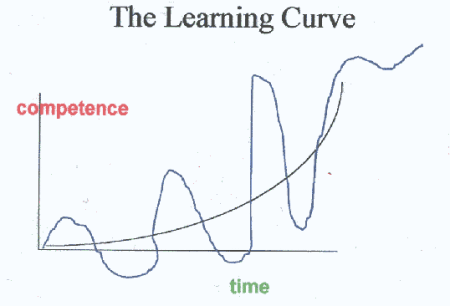Shorten the Training Curve with Cognitive Mapping, Part 1
I am convinced we have done a very poor job in training our workforce. If we do not provide the employee with the right type of training material, he or she will have a much longer training curve.
Editors Note: This is a multi-part series about properly training your employees. Be sure to also read:
Part 2: Information Versus Knowledge

Helping trainees develop their cognitive map shortens the flat end of the curve and helps them get to competence quicker.
I am convinced we have done a very poor job in training our workforce. If we do not provide the employee with the right type of training material, he or she will have a much longer training curve.
The primary goal of training an employee is to help that employee form an accurate and verifiable cognitive map of their process at hand.
The cognitive map is that part of the learning curve that is often considered the plane and the majority of the upward curve. If we do not provide the employee with the right type of training material, he or she will have a much longer training curve.
All around us, we can see people doing things incorrectly because their cognitive map was incorrect. Our goal must be to help an employee create a verifiable cognitive map, in minimum time, and ensure it is accurate.
The techniques and material in use in industry today are not designed for the high percentage of people who are not successful in academic situations.
Our training techniques are not optimized for the people whose reading, writing, math and science skills are below the standards that our technology based industry requires.
We now have a different demographic in the factory worker population, and we are not making the changes needed to accommodate these new employees.
Our goal as trainers has to be to help these employees create an accurate cognitive map of their process. We need to do it fast to shorten the learning curve.
Originally posted at PMPASpeakingofPrecision.com blog.
Related Content
-
Recognizing Signs of a Degrading Workplace Culture
Is your machine shop missing key “culture elements?” Here are ways to identify if your organization is heading in the right or wrong direction in terms of establishing a healthy company culture.
-
Gift a 3D Printer to an Employee?
Some shops have purchased inexpensive polymer 3D printers for their operations. Does it make sense to take this a step further and give (or loan) a sharp young employee one to experiment with at home? This small investment could pay off for your shop in different ways.
-
New Thinking from the New Generation for the New Year
“We have to learn to think in a new way.” –Albert Einstein










.jpg;maxWidth=300;quality=90)




